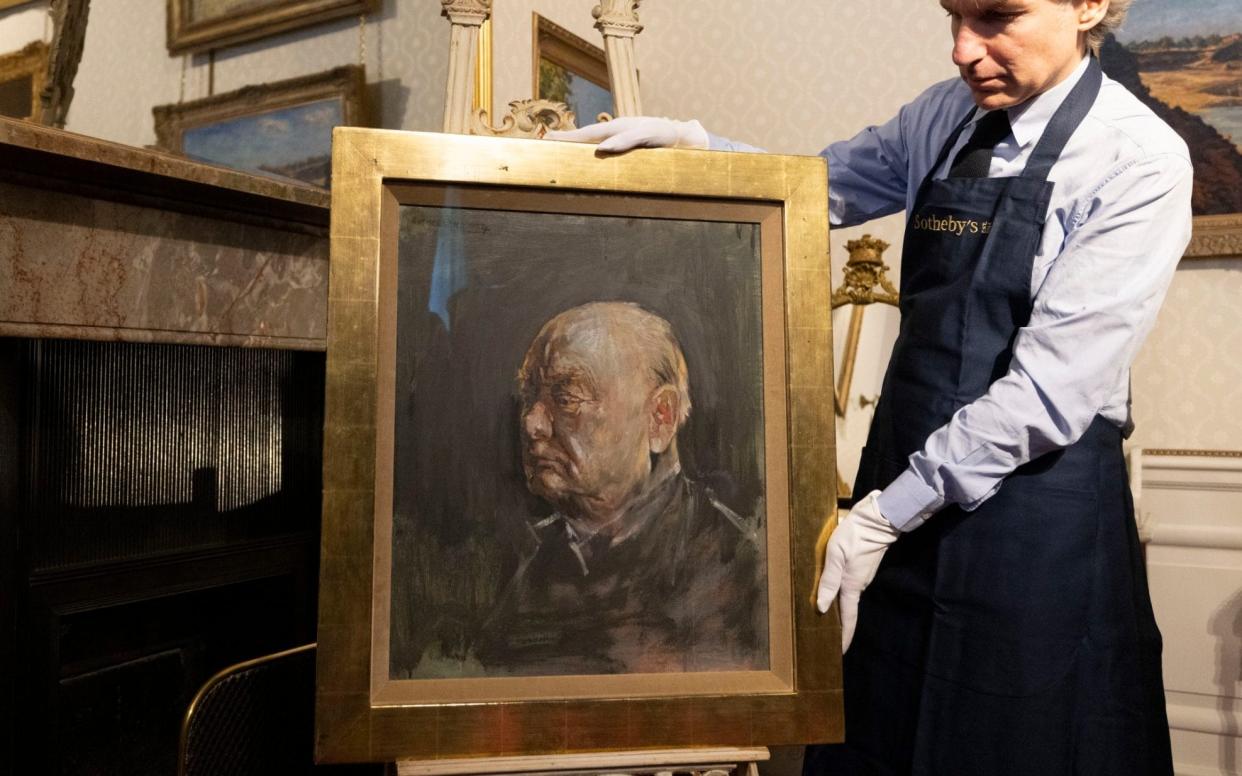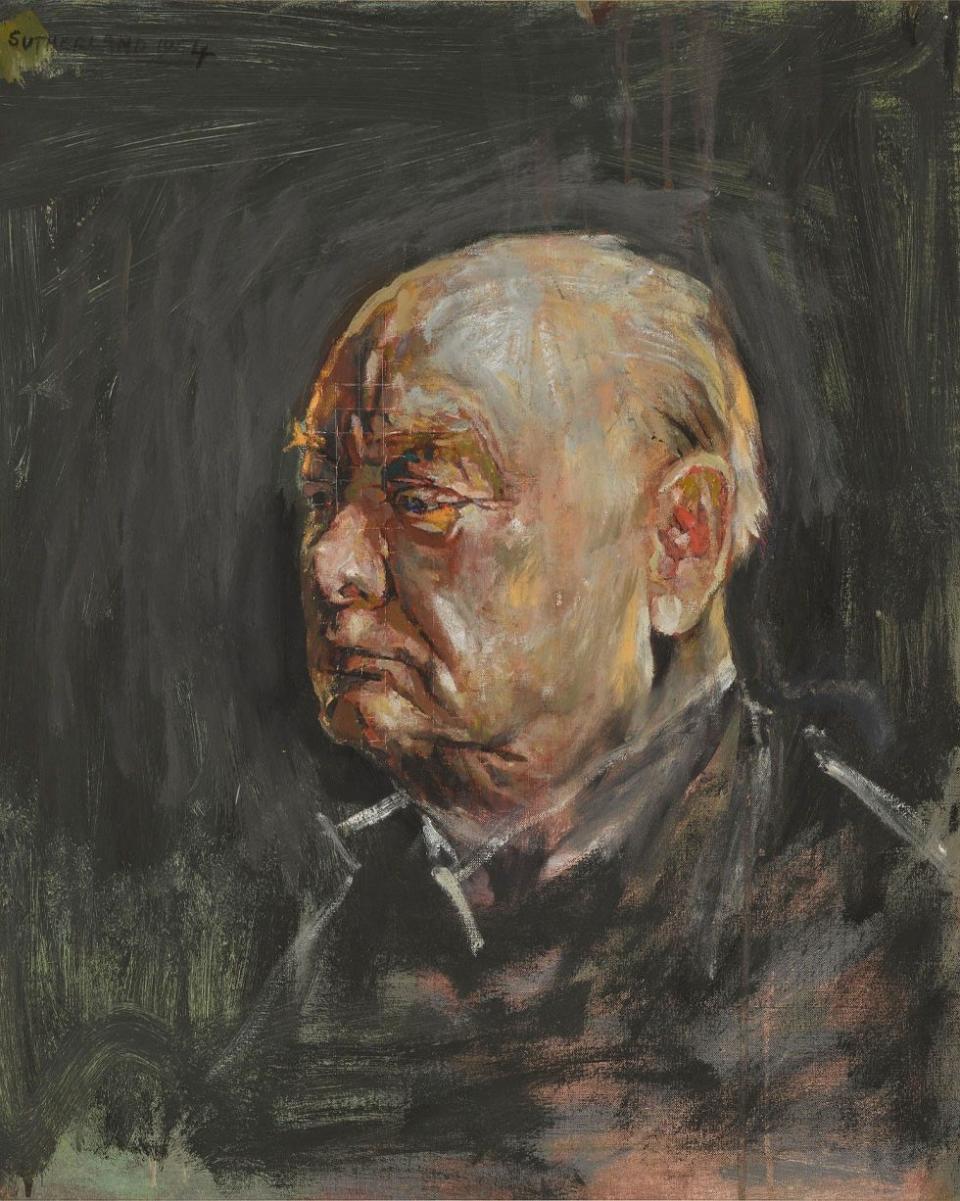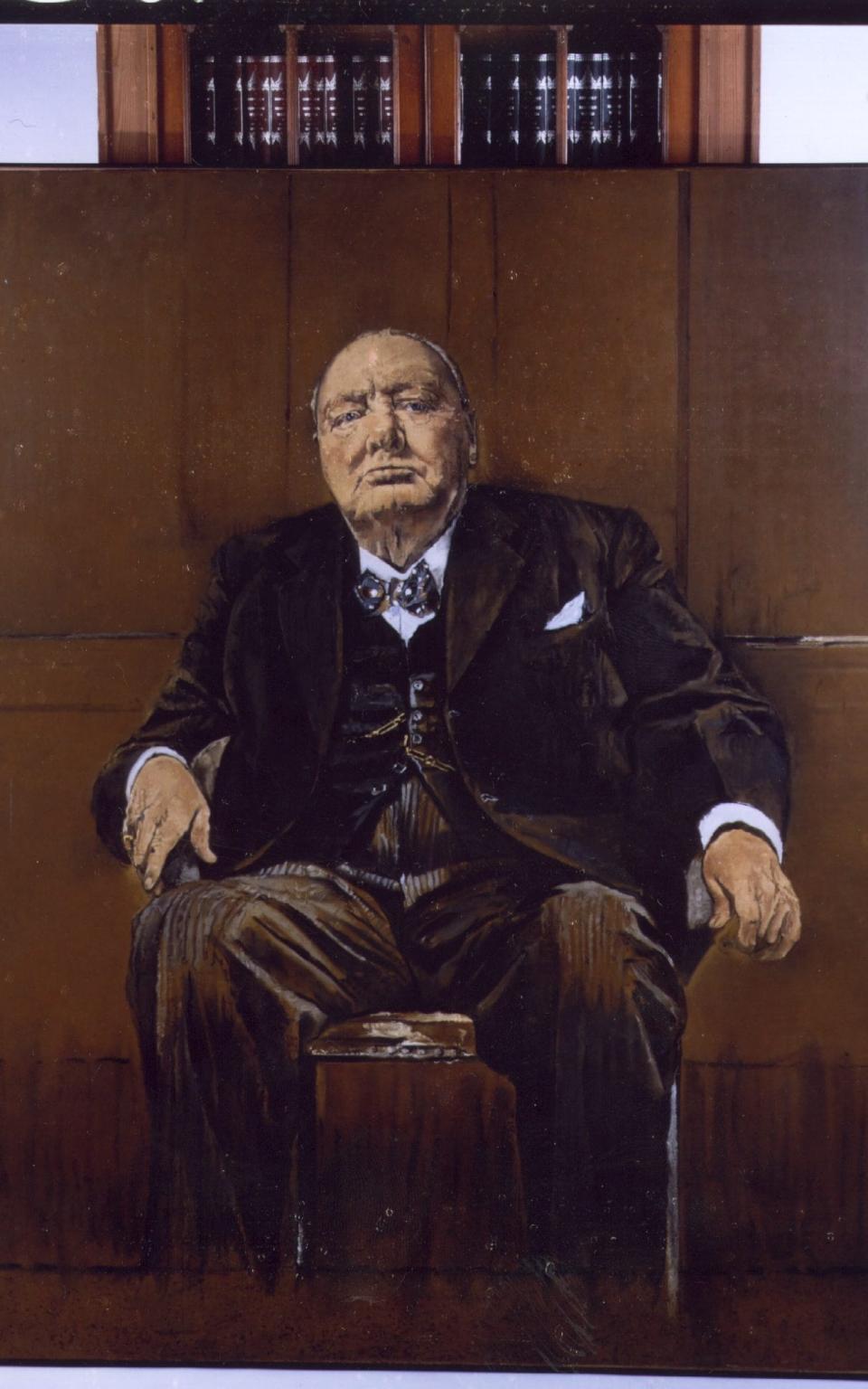Pictured: draft of portrait Churchill hated so much he had it burnt

- Oops!Something went wrong.Please try again later.
The first draft of a Winston Churchill portrait so despised by the wartime prime minister that it was later burnt is set to be sold for the first time.
For his 80th birthday, Churchill received thousands of gifts from around the world, including a commemorative portrait commissioned by Parliament.
Churchill despised the finished birthday gift so much – believing it made him look “like a down-and-out drunk” – that the painting was burned by his staff in an act of destruction later immortalised in an episode of The Crown.
However, an early study for the detested image was passed on to the Ogilvy family, distant relatives of the King, and this surviving work will now be auctioned by Sotheby’s on June 6.
The family’s preparatory painting for the hated work is the first piece from the infamous portrait sitting to reach auction, and is valued at around £800,000.
Churchill wanted portrait to make him look ‘noble’
Marking 150 years since Churchill’s birth, this study will be put on public display in the room in which he was born at Blenheim Palace.
Andre Zlattinger, a Sotheby’s expert, has suggested that Churchill “quite possibly” would have preferred the rough study to the eventual and hated finished portrait, saying: “He had seen some studies and was quite excited by the portrait.”
He added: “He was quite vain about his image, he had had a stroke in 1953, and there were quite a lot of articles in the press about how he was being perceived.”
Graham Sutherland, a celebrated painter of abstract landscapes and portraits, was chosen by Parliament to create the painting of Churchill in time for his 80th birthday in 1954.

Sutherland quickly found the task a difficult one, with Churchill constantly working while he was supposed to be sitting, and desperately trying to control his image and check in on what the artist was doing.
Churchill had narrowly won the 1951 election, and there were suggestions that his understudy Anthony Eden would be better suited for the role of Tory leader. These factors made him more adamant to control his public image and ensure that the commissioned portrait showed him in the best light with a “noble” bearing. At one point he complained that he was being given a double chin.
The then prime minister was barred from wearing his preferred robes of the Order of the Garter for the painting, and kept from properly inspecting the work while it was being painted.
It depicts the aged Prime Minister slouched in a chair in a brown suit, clinging to the chair arms with his face turned upward.
On first seeing the finished product, Churchill raged that it was “malignant” and almost refused to attend a presentation of it at the Houses of Parliament.
He told his private secretary that far from the portrait making him appear heroic, he looked like “a down-and-out drunk who has been picked out of the gutter in the Strand“.
At the official unveiling, he quipped that the painting of him slouched and aged in a chair was a “striking example of modern art”, to laughter from the gathered crowd.
He refused to hang the piece in 10 Downing Street, and it was later burned by staff at his Chartwell estate in Kent, so hated was the work.

The surviving preparatory study for the despised work bears little resemblance to the finished portrait deemed so awful it had to be destroyed.
Rather than showing a slouched “down-and-out” Churchill, the early study shows the Prime Minister gazing out of the window of his office at Chartwell, with the light of sunset across his face as he dictates a letter.
The study was given by Sutherland to his friend Alfred Hecht, a framer of paintings, who later gave it to the Ogilvy family, to which Churchill’s wife Clementine belonged.
The Ogilivies later became connected to the extended Royal family when Sir Angus Ogilvy married Princess Alexandra of Kent, the first cousin of Queen Elizabeth II.
The couple’s son James Ogilvy is a famed landscape designer, and a second cousin of the King.
In the wake of the outrage over the finished painting, the more noble study was rarely displayed, appearing only three times in galleries since 1954.
It has never been sold, and it is understood that it is the first oil study of the infamous collaboration between Sutherland and Churchill to go up for auction.
The study will be on display at Blenheim from April 16 to 21.

